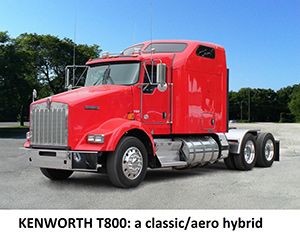13 Speed Trans Question.
Topic 19959 | Page 1

When downshifting, I double down when I am coming to a stop. I go 8H-8L (50mph), then 7L(30-35), 6L, clutch in and come to stop. 6L is around 20mph. Double down around 900rpm. When climbing, I single down around 1000 to 1100 rpm. Be aware engines are different. Hopefully this is "guide" to help. The more you drive your truck, the more in tune you will be with it. I hope this helps.

So my rig is a 13 spd (EF trans). And when I was in school they had me on a 10 speed. And the instructor layed out what gears for what speed. For instance 8th gear is about 35 mph. 9th is 45mph, 10th is 55mph and above. Now it wasn't a big deal on the upshifting, just max it and shift it. But it helped on the downshifting. He had us slow down to 30mph and downshift to 7. By the time we got moved over and revved it was right about at 25mph. Then slow down to 15 and go to 5. Then stop.
So my question is, does anyone have a chart or reference they use for what speed to downshift at? And what gears do you skip thru? I've done some Google searches but nothing that I want pops up. I'm stuck going down 1 gear at a time or just coming up and stopping until I can figure it out.
Did they teach you floating the gears in school or just double-clutching?

Oscar asked:
Did they teach you floating the gears in school or just double clutching?
With very few exceptions, the schools teach double clutching and the state instructors usually require double clutching to pass the CDL road test.
CDL:
Commercial Driver's License (CDL)
A CDL is required to drive any of the following vehicles:
- Any combination of vehicles with a gross combined weight rating (GCWR) of 26,001 or more pounds, providing the gross vehicle weight rating (GVWR) of the vehicle being towed is in excess of 10,000 pounds.
- Any single vehicle with a GVWR of 26,001 or more pounds, or any such vehicle towing another not in excess of 10,000 pounds.
- Any vehicle, regardless of size, designed to transport 16 or more persons, including the driver.
- Any vehicle required by federal regulations to be placarded while transporting hazardous materials.
Double Clutch:
To engage and then disengage the clutch twice for every gear change.
When double clutching you will push in the clutch, take the gearshift out of gear, release the clutch, press the clutch in again, shift the gearshift into the next gear, then release the clutch.
This is done on standard transmissions which do not have synchronizers in them, like those found in almost all Class A trucks.
Double Clutching:
To engage and then disengage the clutch twice for every gear change.
When double clutching you will push in the clutch, take the gearshift out of gear, release the clutch, press the clutch in again, shift the gearshift into the next gear, then release the clutch.
This is done on standard transmissions which do not have synchronizers in them, like those found in almost all Class A trucks.
With very few exceptions, the schools teach double clutching and the state instructors usually require double clutching to pass the CDL road test.
^^^^ This ^^^^
Schools (that is non-company schools) do not teach floating - ALL states require double-clutching if you are testing on a manual transmission. Since most companies do their CLP training OTR with a trainer, they might teach you how to float - but it's in their best interest NOT TO, since you will need to double-clutch to pass a road test.
I always tell the story of how I "self-taught" myself how to float in school (County VoTech) and my first road test, I failed on 23 bad shifts - because I hadn't practiced double-clutching enough to really get it down.
Rick
CDL:
Commercial Driver's License (CDL)
A CDL is required to drive any of the following vehicles:
- Any combination of vehicles with a gross combined weight rating (GCWR) of 26,001 or more pounds, providing the gross vehicle weight rating (GVWR) of the vehicle being towed is in excess of 10,000 pounds.
- Any single vehicle with a GVWR of 26,001 or more pounds, or any such vehicle towing another not in excess of 10,000 pounds.
- Any vehicle, regardless of size, designed to transport 16 or more persons, including the driver.
- Any vehicle required by federal regulations to be placarded while transporting hazardous materials.
OTR:
Over The Road
OTR driving normally means you'll be hauling freight to various customers throughout your company's hauling region. It often entails being gone from home for two to three weeks at a time.
Double Clutch:
To engage and then disengage the clutch twice for every gear change.
When double clutching you will push in the clutch, take the gearshift out of gear, release the clutch, press the clutch in again, shift the gearshift into the next gear, then release the clutch.
This is done on standard transmissions which do not have synchronizers in them, like those found in almost all Class A trucks.
Double Clutching:
To engage and then disengage the clutch twice for every gear change.
When double clutching you will push in the clutch, take the gearshift out of gear, release the clutch, press the clutch in again, shift the gearshift into the next gear, then release the clutch.
This is done on standard transmissions which do not have synchronizers in them, like those found in almost all Class A trucks.
CLP:
Commercial Learner's Permit
Before getting their CDL, commercial drivers will receive their commercial learner's permit (CLP) upon passing the written portion of the CDL exam. They will not have to retake the written exam to get their CDL.

A guy at work taught me to float. Then I had to learn double clutch at the school. I can do both but obviously I float them now.
That guide did help thanks. It's got a Cummins in it. I'll get it sorted but that will definitely help
Double Clutch:
To engage and then disengage the clutch twice for every gear change.
When double clutching you will push in the clutch, take the gearshift out of gear, release the clutch, press the clutch in again, shift the gearshift into the next gear, then release the clutch.
This is done on standard transmissions which do not have synchronizers in them, like those found in almost all Class A trucks.
13 and 18 speeds seem too complicated for me to learn on. I will stick with the normal 10. How do you shift those split gears like that? Also, how does one shift a "Super 10"?
HOS:
Hours Of Service
HOS refers to the logbook hours of service regulations.
13 and 18 speeds seem too complicated for me to learn on. I will stick with the normal 10. How do you shift those split gears like that? Also, how does one shift a "Super 10"?
Lol.. I will not drive a 10 or have one in my trucks. They are actually very easy to drive. Unless I am really heavy or on a grade, I usually only split the top two gears.
HOS:
Hours Of Service
HOS refers to the logbook hours of service regulations.
I remember splitting gears in trucking school with the 13 speed Kenworth I learned on. Now I climb mountains every day and have to deal with shifting a 10 speed before 15 rpms so that I don't get a knock on my ROI (rpms, overspeed, and idle) grade. Oh the agony.
New Reply:
New! Check out our help videos for a better understanding of our forum features

















Preview:








 TT On Facebook
TT On Facebook
So my rig is a 13 spd (EF trans). And when I was in school they had me on a 10 speed. And the instructor layed out what gears for what speed. For instance 8th gear is about 35 mph. 9th is 45mph, 10th is 55mph and above. Now it wasn't a big deal on the upshifting, just max it and shift it. But it helped on the downshifting. He had us slow down to 30mph and downshift to 7. By the time we got moved over and revved it was right about at 25mph. Then slow down to 15 and go to 5. Then stop.
So my question is, does anyone have a chart or reference they use for what speed to downshift at? And what gears do you skip thru? I've done some Google searches but nothing that I want pops up. I'm stuck going down 1 gear at a time or just coming up and stopping until I can figure it out.